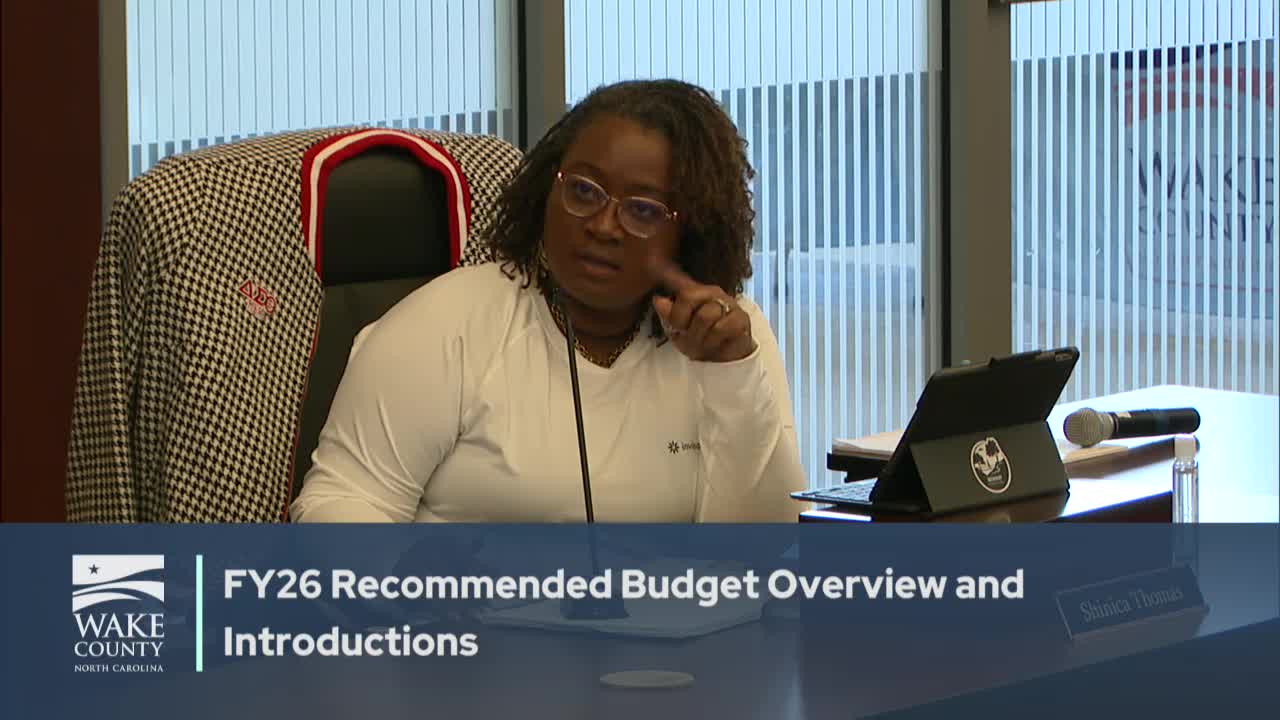Budget committee discusses funding shifts amid projected $43.5 million federal reduction
May 22, 2025 | Wake County, North Carolina
This article was created by AI summarizing key points discussed. AI makes mistakes, so for full details and context, please refer to the video of the full meeting. Please report any errors so we can fix them. Report an error »

During the Wake County government meeting on May 22, 2025, officials discussed significant budgetary challenges and adjustments in light of anticipated reductions in federal funding. The meeting highlighted the county's strategic financial planning as it navigates a post-pandemic fiscal landscape.
One of the key topics was the expected decrease in federal funding by approximately $43.5 million, alongside a reduction in local revenue sources by $41 million. This shift raises critical questions about how the county will prioritize its expenditures moving forward, particularly with an additional $20 million in projected expenses. Officials emphasized the need to reassess funding priorities to ensure essential services remain intact while adapting to the changing financial environment.
The discussion also touched on the county's unassigned fund balance, which had been intentionally increased during the pandemic through expenditure restrictions. This fund balance is now below the 6% threshold set by board policy, marking the first time since before the pandemic that it has dipped below this level. The implications of this decrease are significant, as the policy restricts the use of more than 50% of the unassigned fund balance for balancing future budgets. This limitation will impact the county's ability to fund new initiatives or expand existing programs in the upcoming fiscal year.
Moreover, officials noted that the proposed budget for 2025-2026 does not include requests for new programs or initiatives, reflecting a cautious approach to financial planning amid uncertainty. The county's reliance on multi-year federal grants complicates budget forecasting, as these grants cannot be easily accounted for in a single fiscal year.
In conclusion, the Wake County meeting underscored the complexities of budget management in a time of reduced funding and shifting priorities. As officials prepare for the upcoming fiscal year, the focus will be on maintaining essential services while navigating the constraints imposed by declining federal support and the limitations of the unassigned fund balance. The community will be watching closely as these financial strategies unfold, with implications for local services and programs.
One of the key topics was the expected decrease in federal funding by approximately $43.5 million, alongside a reduction in local revenue sources by $41 million. This shift raises critical questions about how the county will prioritize its expenditures moving forward, particularly with an additional $20 million in projected expenses. Officials emphasized the need to reassess funding priorities to ensure essential services remain intact while adapting to the changing financial environment.
The discussion also touched on the county's unassigned fund balance, which had been intentionally increased during the pandemic through expenditure restrictions. This fund balance is now below the 6% threshold set by board policy, marking the first time since before the pandemic that it has dipped below this level. The implications of this decrease are significant, as the policy restricts the use of more than 50% of the unassigned fund balance for balancing future budgets. This limitation will impact the county's ability to fund new initiatives or expand existing programs in the upcoming fiscal year.
Moreover, officials noted that the proposed budget for 2025-2026 does not include requests for new programs or initiatives, reflecting a cautious approach to financial planning amid uncertainty. The county's reliance on multi-year federal grants complicates budget forecasting, as these grants cannot be easily accounted for in a single fiscal year.
In conclusion, the Wake County meeting underscored the complexities of budget management in a time of reduced funding and shifting priorities. As officials prepare for the upcoming fiscal year, the focus will be on maintaining essential services while navigating the constraints imposed by declining federal support and the limitations of the unassigned fund balance. The community will be watching closely as these financial strategies unfold, with implications for local services and programs.
View full meeting
This article is based on a recent meeting—watch the full video and explore the complete transcript for deeper insights into the discussion.
View full meeting
